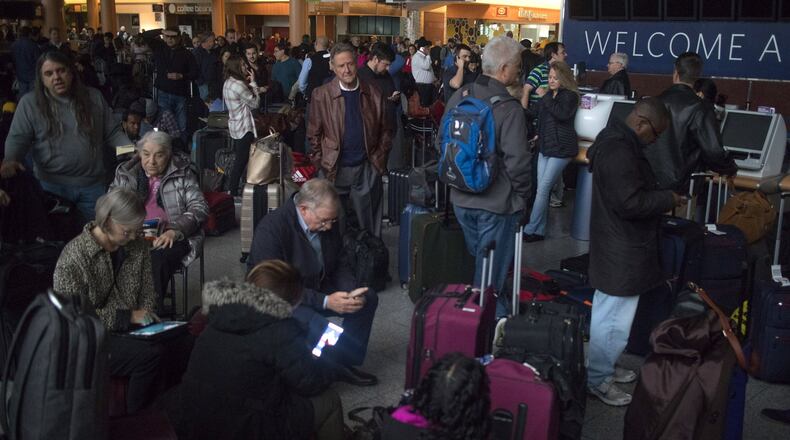In the wake of the massive Atlanta airport power outage in December, Hartsfield-Jackson's general manager said he wants to set up a system of emergency generators powerful enough to keep the airport's concourses in operation.
Roosevelt Council told the Atlanta city council transportation committee on Wednesday that he plans to meet with Georgia Power early next week to determine the viability of physically separating the main and redundant power systems.
It’s unclear how much that will cost — and who will pay for it.
Council said he expects any costs to the airport “will be reflected in any kind of fiscal year 2019 budget request.” Emergency preparations could also add to the contract cost that the airport pays to the Atlanta Airlines Terminal Corp., an airline cooperative that handles operations and maintenance of the terminal facility.
He said Atlanta airport officials are “trying to create a level of robustness that will create a second redundancy,” enough to power the concourses at the airport. “We are not just looking at a single redundancy, but possibly another redundancy.”
Council told the Atlanta city council transportation committee that the airport is served by two substations that sit six miles apart, with cables that run underneath the airport to each concourse.
Those cables were damaged by a fire triggered by the failure of Georgia Power switchgear equipment, resulting in the loss of power throughout the world's busiest airport starting just after 1 p.m. and lasting until close to midnight.
Council said the initial estimate of how long it would take to get the power back on throughout the airport during the outage was 36 to 48 hours — a scenario that could have worsened the havoc and disruption for hundreds of thousands of travelers around the world even worse than during the nearly 12 hour outage.
Georgia Power said it will “continue to work closely with Hartsfield-Jackson to determine whether we can make the system even more reliable within the constraints of the airport’s facilities.”
The airport “always [has] a say-so” in the maintenance of facilities, but Georgia Power is responsible for the design, according to Council. “Whether that is something that we look at changing, that becomes fodder for discussion,” along with redundant systems, Council said.
Georgia Power said it works with customers to design systems that meet their needs, and that the overall airport electrical system was designed in coordination with and approved by Hartsfield-Jackson.
One of the major disruptive forces of the outage was that jetways could not be moved from airplanes, Council said. That required the Federal Aviation Administration to call for a ground stop, keeping other planes from coming into the Atlanta airport.
“It takes a lot of power to move the jetways to the airplanes,” Council said. “Our goal is to add as much power to those generators to power up a concourse.”
“That is a lot of power,” since each concourse has dozens of gates and jet bridges, Council said. But, “that’s the key to getting the operation back in place.”
The airport has also come under fire for its scant communication to the tens of thousands of passengers stuck in the airport, after the blackout took out the airport’s PA system.
The airport has ordered dozens of additional bullhorns to be used by airport workers in emergencies, which Council expects to be delivered “any day now.” The battery-powered, handheld megaphones could be used to communicate with passengers in the terminal and concourses during power outages.
He also told the committee the airport has about 33 emergency plans for incidents such as plane crashes, fires and terrorist attacks.
“We’re doing a detailed, comprehensive review of all of our emergency plans,” including a “more robust” power outage plan, Council said.
Transportation committee chair Andre Dickens said he expects updates from the airport on the progress of action items in response to the power outage.
Meanwhile, a water main break at New York’s John F. Kennedy International Airport that disrupted flights this week highlighted another potential vulnerability for airports.
“That was quite harrowing,” Council said. “We take note of those things.” He said the airport has been asked to join a city watershed department team to look at similar emergencies.
About the Author
Keep Reading
The Latest
Featured


